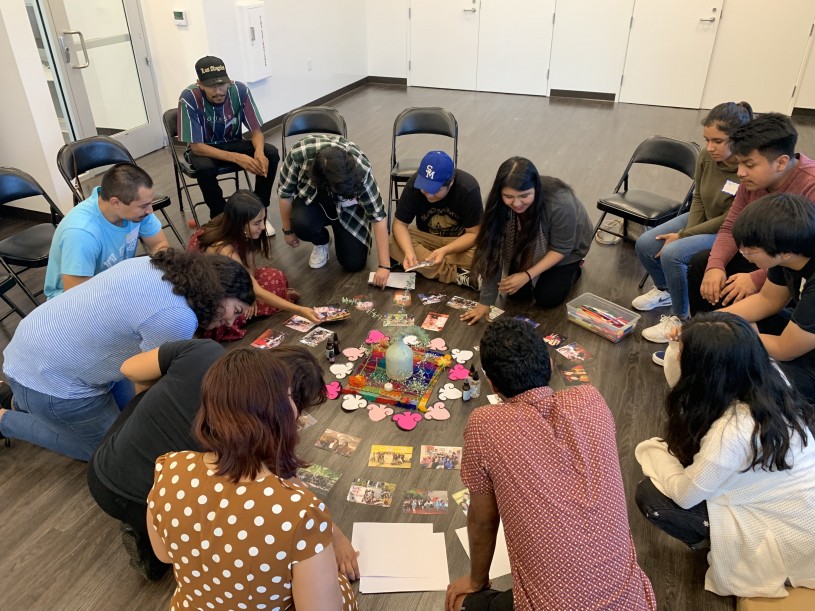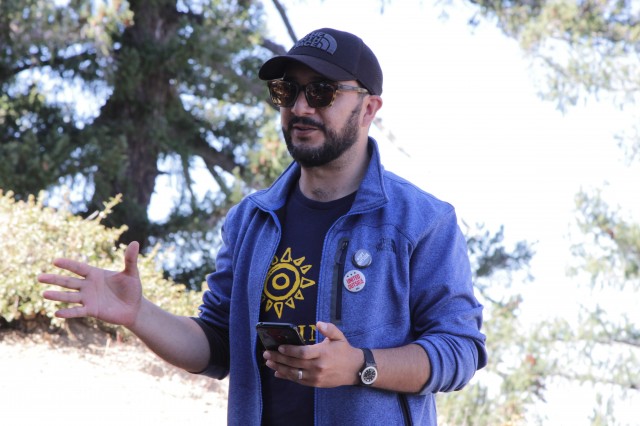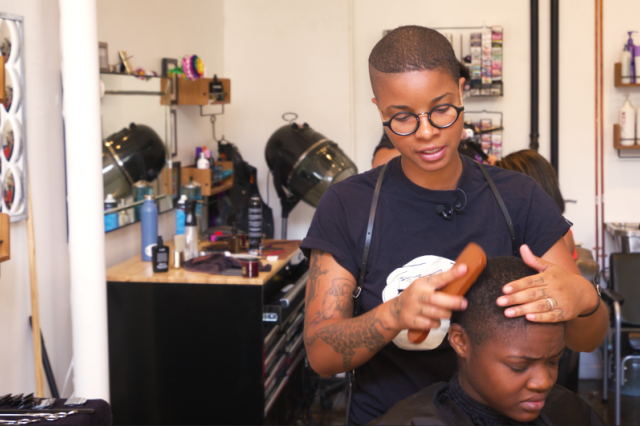Angelenos Building Community: Celebrating John Jairo Valencia, InnerCity Struggle
Supporting young men in Boyle Heights through academic empowerment
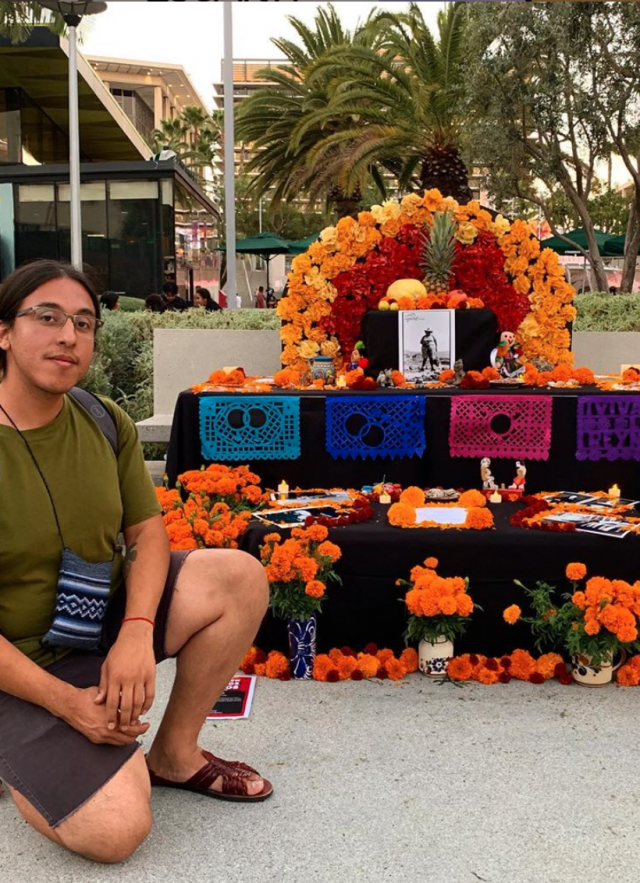
Angelenos Building Community is a series of stories from a diverse range of Angelenos and the work they do in support of their community in Los Angeles. The Natural History Museum of Los Angeles County is committed to uplifting the voices of community members who strive to create an equitable, accessible, and inclusive community for all.
MEET john jairo valencia (THEY/he)

John Jairo (they/he) is an Academic Advisor at InnerCity Struggle, a social justice community organization in the Eastside of Los Angeles aimed at building a community of grassroots leaders advocating for educational justice, housing justice, youth justice, civic engagement and more. John Jairo leads the Sembrando Scholars Program, a pilot program aimed to create academic empowerment for a cohort of boys of color through one-on-one advising at Mendez High School and Roosevelt High School driven by restorative justice values. In addition, along with a team of dedicated individuals, John Jairo supports youth organizers that are part of a club called United Students through mentoring, tutoring, and holistic programming. In addition to their academic advising work, John Jairo is an artist, poet and culture worker and sees the importance of stories, the arts, healing and cultural practices as avenues of community transformation.
InnerCity Struggle is a Community Partner of NHM (What's this? Learn more).
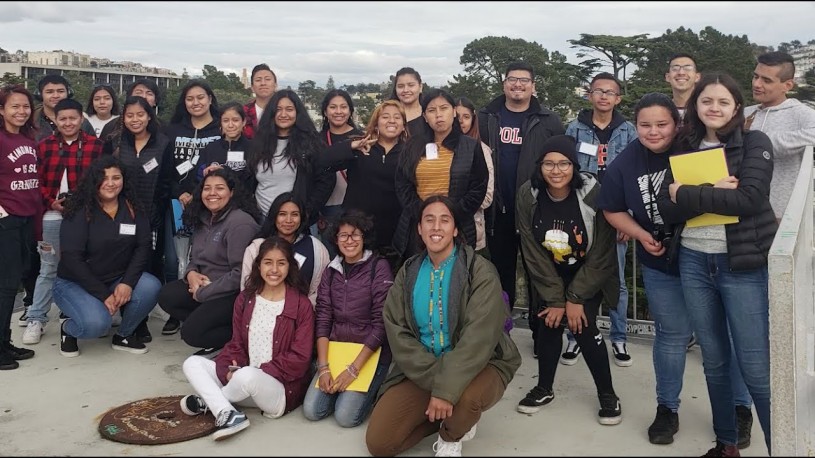
Interview facilitator
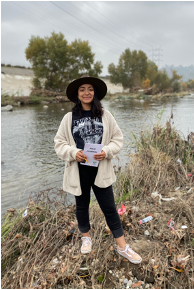
Samantha Avitia (she/her) is a community organizer, museum educator, activist, and ceramicist. Since 2019, Samantha has worked at the Museum co-producing L.A. Nature Fest 2019, developing curriculum for the Adventures In Nature summer camp, and developing stories for the Angelenos Building Community series. Samantha is a graduate of the 2017-2018 Arts for LA, ACTIVATE Cultural Policy Fellowship and is a current member of the Nature For All - Leadership Academy.
Samantha has a B.A. in History from California State University, Long Beach with a focus on Latin America and is currently working on a M.P.A. in Nonprofit Management from California State University, Northridge.
Watch a video interview between John Jairo Valencia, Academic Advisor at InnerCity Struggle, and Samantha Avitia, Community Engagement Coordinator, as they discuss John Jairo’s initiative to support young men during the pandemic through The Sembrando Scholars Program.
Can you tell us a bit about yourself? Did you grow up in Los Angeles?
My maternal grandparents lived in a Mexican migrant farm working community near Bakersfield, CA when they met. They decided to move to Los Angeles in the late 1950s, and my mother’s generation was raised in East L.A. My father grew up in Medellín, Colombia and migrated to Los Angeles in the 1980s due to economic struggles and civil unrest. I was raised both in the East Los Angeles community of Boyle Heights and Bassett, a neighborhood in the San Gabriel Valley. My family’s stories, struggles, love, and perseverance are what have shaped my worldview. Throughout my upbringing, I was very privileged to have been raised amongst the rich cultural legacy that emerged out of the Chicano Movement in Los Angeles. My sense of identity was shaped by annual Day of the Dead celebrations, going to anti-war protests, listening to heated political discussions at the kitchen table, and being taught the value of family traditions.
Since I was a youth, I felt it a responsibility of mine to tell our stories, to decolonize history, reclaim empowering cultural values and be of service to our community. When I attended college at UC Berkeley, my rootedness in my family story and community served as a compass for me. I graduated in the Ethnic Studies field with a focus on Native American Studies, Chicanx Studies and Art. Coming back to Los Angeles, and now working with youth, I am always reminded of the beauty of the people, history, and legacy that make up greater Los Angeles.
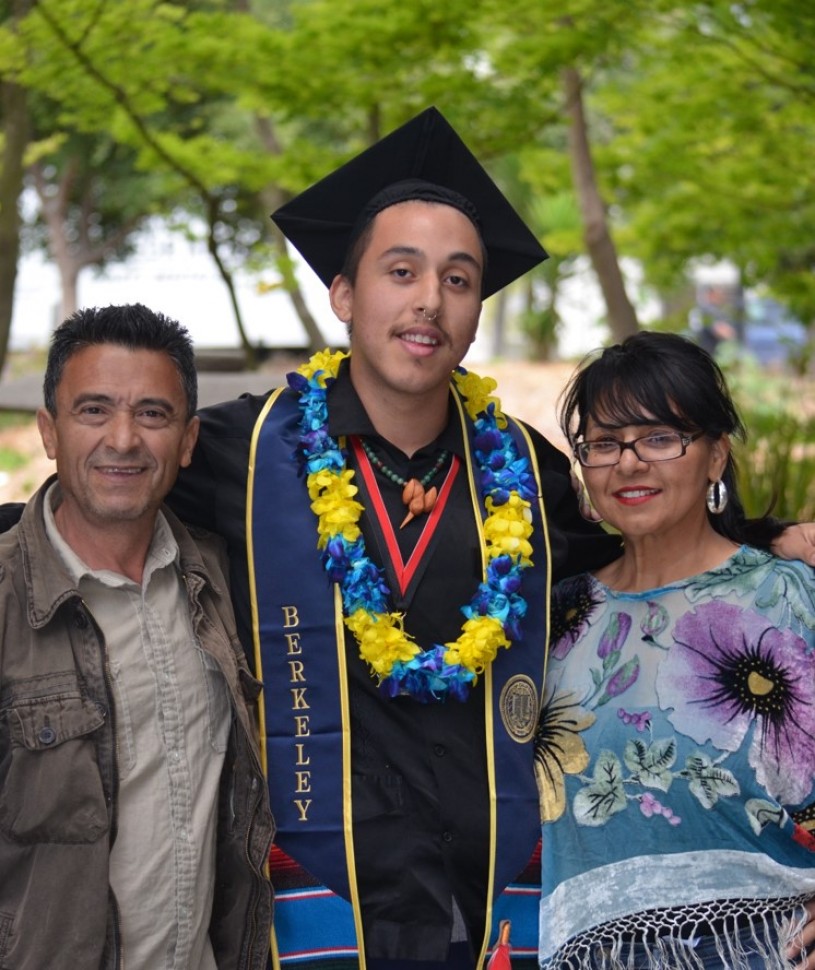
Can you tell us a bit about your job/career?
At InnerCity Struggle, a team of community organizers, youth leaders, parent leaders, academic advisors and more work together to create meaningful change in the Eastside of Los Angeles. Since 1994, InnerCity Struggle started as a grassroots movement to address neighborhood violence and has now evolved to become a multi-issue organization from organizing for housing rights to dismantling the school-to-prison pipeline. I arrived at InnerCity Struggle over 2 years ago, where I was tasked to develop and facilitate a pilot program that seeks to bridge the engagement gap experienced by boys of color in Boyle Heights. While developing the program, I learned that the outcome of this engagement gap is boys of color graduating from high school and attending higher education at significantly lower rates than students of other identity markers. From social conditioning, lack of resources and culturally relevant curriculum, to the criminalization of Black and Brown youth, we see that this phenomenon is a result of a legacy of the lack of investment in our community.
The program was named the Sembrando Scholars Program, centering the value of “sembrando” or “sowing” seeds. Like sowing seeds, we must be reminded that growing something new, mentoring youth, and transforming our community are really slow processes, and we must have the willpower to be persistent, nurturing, and celebratory of every victory, no matter how small. My main role at InnerCity Struggle is to be an Academic Advisor providing one-on-one advising and facilitating restorative justice circles to students in the Sembrando Scholars Program. Over the past 2 years, about 30 students at Mendez High School and Roosevelt High School have been part of the program.

How do you incorporate community in the work you do?
Community is in every aspect of the work we do through InnerCity Struggle, yet the elements that have really highlighted the importance of community for me have been restorative justice circle practices. In both my work with the Sembrando Scholars Program and in my supportive role to the youth organizing component at InnerCity Struggle called United Students, I have witnessed the power of sitting in circle. There are many layers to restorative justice, but in my work I have been able to learn and deepen the practice of facilitation, holding brave spaces, and utilizing the arts and storytelling for building community.
While organizing for social justice, it is also important to envision and practice what it means to be a loving community. Restorative justice and transformative justice practices, having been adopted from various Indigenous cultures throughout the world, recently found their way to schools, prisons, and beyond. They have become tools of healing in places that have historically caused institutional harm. I believe that these tools can help us to find our way back home to beloved communities. I am reminded that centering love and healing in community work is what builds trust, authentic relationships, and sustains lasting change.
I am very new to this role, and really I am just a small droplet in a whole ecosystem of transformative work being done throughout Los Angeles, but I am grateful to bear witness, learn from, and contribute what I can to it all. Although I offer academic advising and facilitate spaces for students, these youth offer us so much more through their dedication, leadership, and spirit.
